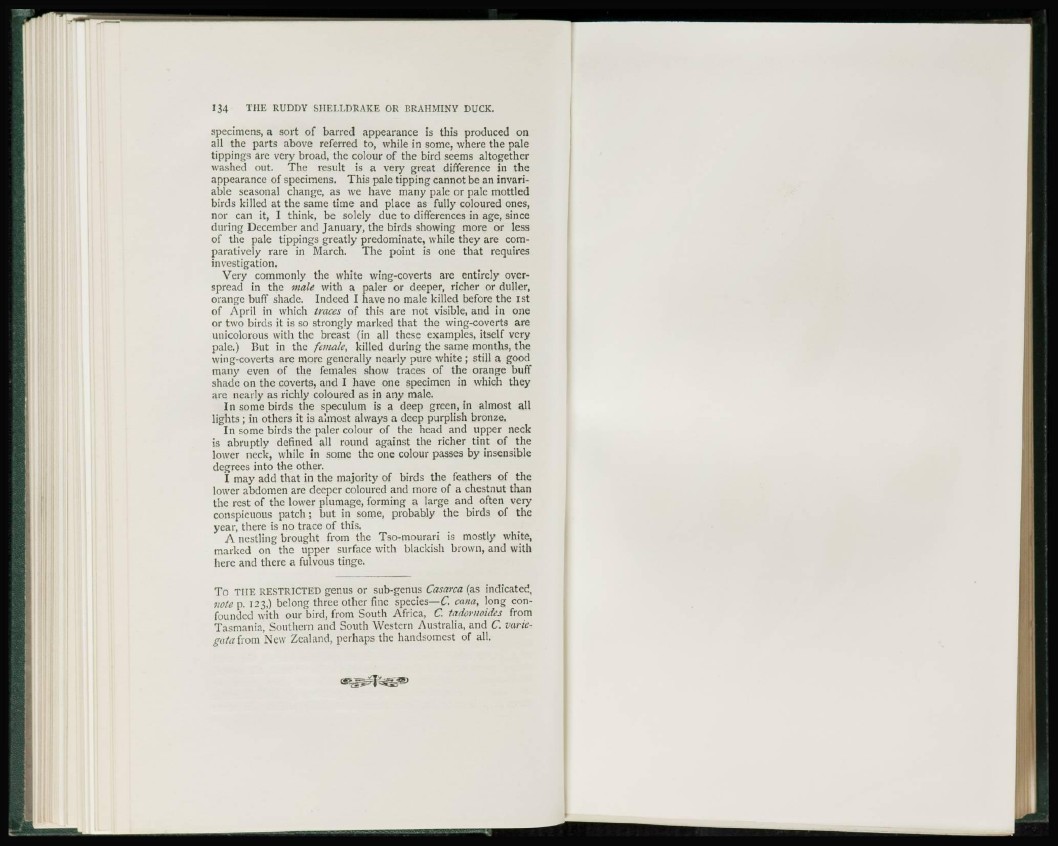
134 THE RUDDY SHELLDRAKE OR BRAIIMINY DUCK.
specimens, a sort of barred appearance is this produced on
all the parts above referred to, while in some, where the pale
tippings are very broad, the colour of the bird seems altogether
washed out. The result is a very great difference in the
appearance of specimens. This pale tipping cannot be an invariable
seasonal change, as we have many pale or pale mottled
birds killed at the same time and place as fully coloured ones,
nor can it, I think, be solely due to differences in age, since
during December and January, the birds showing more or less
of the pale tippings greatly predominate, while they are comparatively
rare in March. The point is one that requires
investigation.
Very commonly the white wing-coverts are entirely overspread
in the male with a paler or deeper, richer or duller,
orange buff shade. Indeed I have no male killed before the 1st
of April in which traces of this are not visible, and in one
or two birds it is so strongly marked that the wing-coverts are
unicolorous with the breast (in all these examples, itself very
pale.) But in the female, killed during the same months, the
wing-coverts arc more generally nearly pure white ; still a good
many even of the females show traces of the orange buff
shade on the coverts, and I have one specimen in which they
are nearly as richly coloured as in any male.
In some birds the speculum is a deep green, in almost all
lights ; in others it is almost always a deep purplish bronze.
In some birds the paler colour of the head and upper neck
is abruptly defined all round against the richer tint of the
lower neck, while in some the one colour passes by insensible
degrees into the other.
I may add that in the majority of birds the feathers of the
lower abdomen are deeper coloured and more of a chestnut than
the rest of the lower plumage, forming a large and often very
conspicuous patch; but in some, probably the birds of the
year, there is no trace of this.
A nestling brought from the Tso-mourari is mostly white,
marked on the upper surface with blackish brown, and with
here and there a fulvous tinge.
To THE RESTRICTED genus or sub-genus Casarca (as indicated,
note p. 123,) belong three other fine species—C. cana, long confounded
with our bird, from South Africa, C. tadornoides from
Tasmania, Southern and South Western Australia, and C. varicgata
from New Zealand, perhaps the handsomest of all.